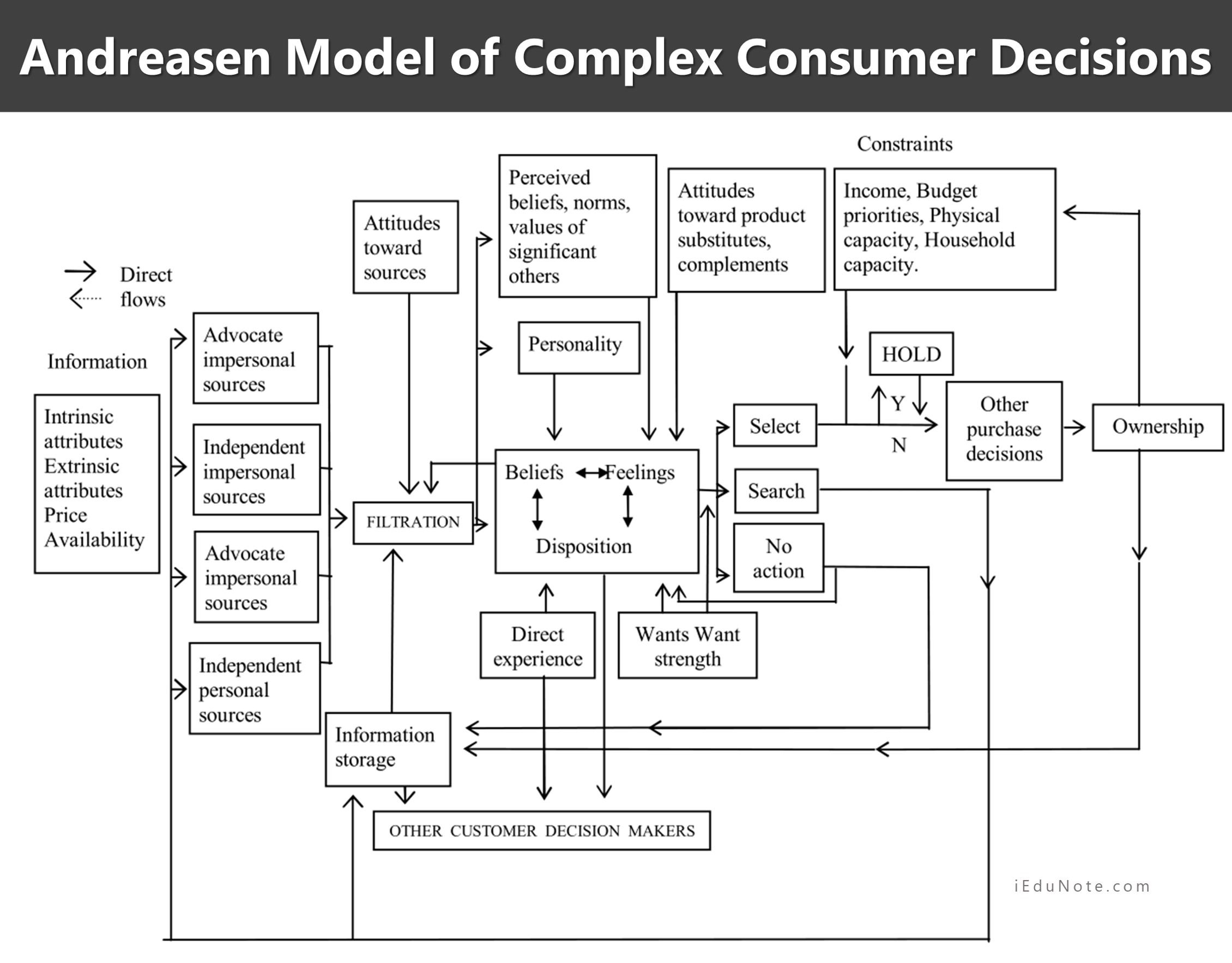Alan R. Andreasen developed the Andreasen model in 1965. The Andreasen model emphasizes attitudes and attitude changes.
An attitude change is caused by exposure to all kinds of information that comes to the buyer over the time period: some may seek, and some may involuntarily come to him. The model shows a kind of information processing (shown in the next figure) cycle with stages of stimuli, perception, filtration disposition changes, and several outcome possibilities.
The model is based on cognitive theory and Gestalt psychology, emphasizing the person as a whole rather than isolated behaviors. Andreasen suggests several questions raised by the model.

For examples, the following can be mentioned:
- What is the relationship between individual characteristics (such as age, education, family status, and personality needs for cognitive clarity) and the number and kinds of information sources sought during some specified searching period?
- What kinds of information tend to be sought from particular information sources?
- How is information about sources combined with information about products and services, brands, and outlets? What is the interaction between them?
- How are messages (advertisements) selected and/or distorted in the filtration process?
- How does one measure attitude disposition valences?